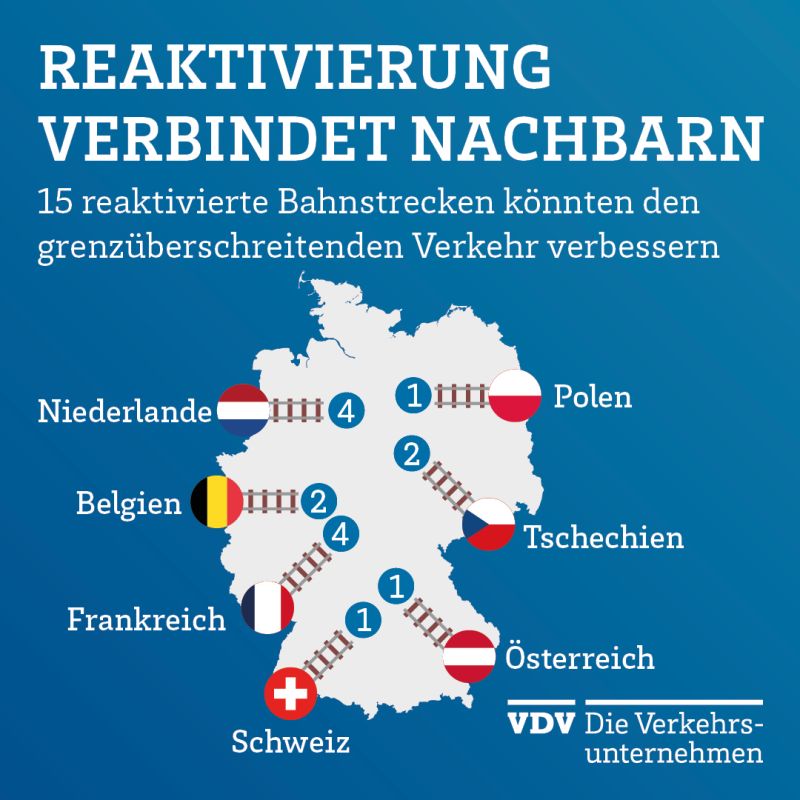 The Verband Deutscher Verkehrsunternehmen (VDV) (Association of German Transport Companies) has a detailed new website about reactivation of railway lines, and a PDF report with more detail. And one aspect of their proposals are cross-border reactivations that they have been publicising with the little infographic that I reproduce here. So far, so good.
The Verband Deutscher Verkehrsunternehmen (VDV) (Association of German Transport Companies) has a detailed new website about reactivation of railway lines, and a PDF report with more detail. And one aspect of their proposals are cross-border reactivations that they have been publicising with the little infographic that I reproduce here. So far, so good.
But what are the 15 lines?
The answer is to be found in the map on page 13 of the PDF report, that uses the German track numbering system.
Here I am going to list the lines in turn, starting in the north east, and make a quick analysis of each.
1. Guben 🇩🇪 – Gubinek 🇵🇱
On my All The Borders map here, 6153 on the VDV map
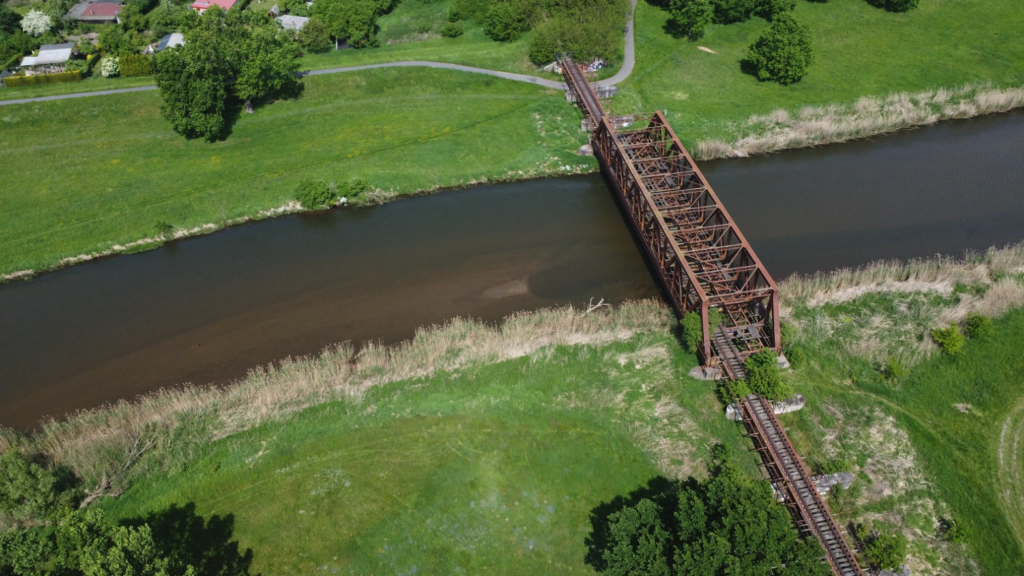
This one is hard. Not only is the bridge over the Neiße – pictured – in a bad state, but there is a lot of work to do on the Polish side too. Theoretically trains will be extended from Żary to Lubsko in a few years, but there were no signs of works starting when I was in Lubsko last year:

Lubsko to Guben is then a further 28km, with the vast majority of the work needed on the Polish side. Sure, this would be a nice connection to have, and Żary is an important regional centre, but I judged this one too complex and too costly to include in my own list of priority projects. Overall the issues at the Germany-Poland border are more poor quality or slow infrastructure, and missing electrification (especially Zgorzelec – Görlitz), and to some extent timetable and ticketing problems. The main issue here is not lines to re-activate.
2. Seifhennersdorf 🇩🇪 – Varnsdorf pivovar Kocour 🇨🇿
On my All The Borders map here, 6588 on the VDV map
I am confused as to why this one is included – because trains run on the cross border section Zittau – Varnsdorf, and Varnsdorf – Seifhennersdorf already, and I went to the party for the re-opening of the line in summer 2023 – as shown in this pic:
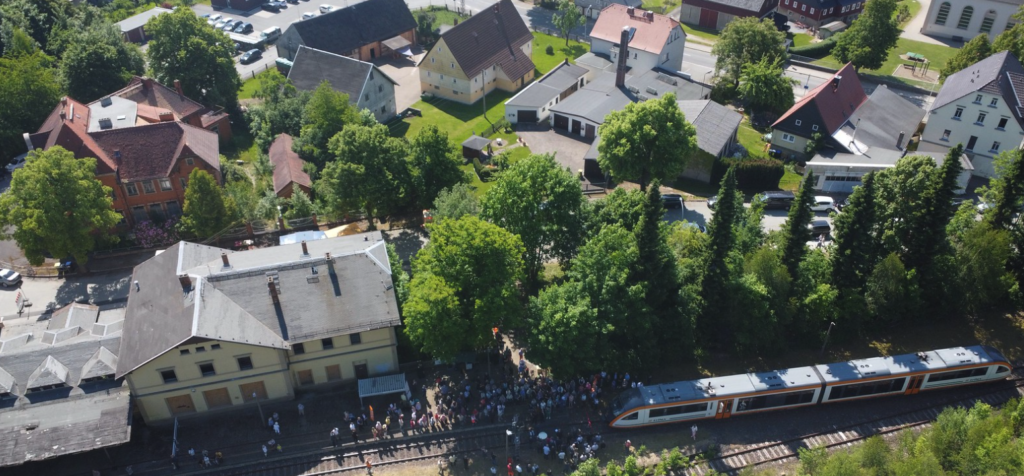
It was one of my priority projects, and now it is fixed – explained here. Yes, the line is still inoperable between Seifhennersdorf and Eibau – there are bushes growing on the lines – but fixing that section is a national and not an international reactivation.

3. Waldsassen 🇩🇪 – Slapany 🇨🇿
On my All The Borders map here, 5040 on the VDV map
Only a spur from Wiesau exists on this one any more. Some of the alignment has been preserved, German side, but re-routing a railway through the middle of Mitterteich would be very complex due to the way roads have been re-routed. Also some bridges have been removed:
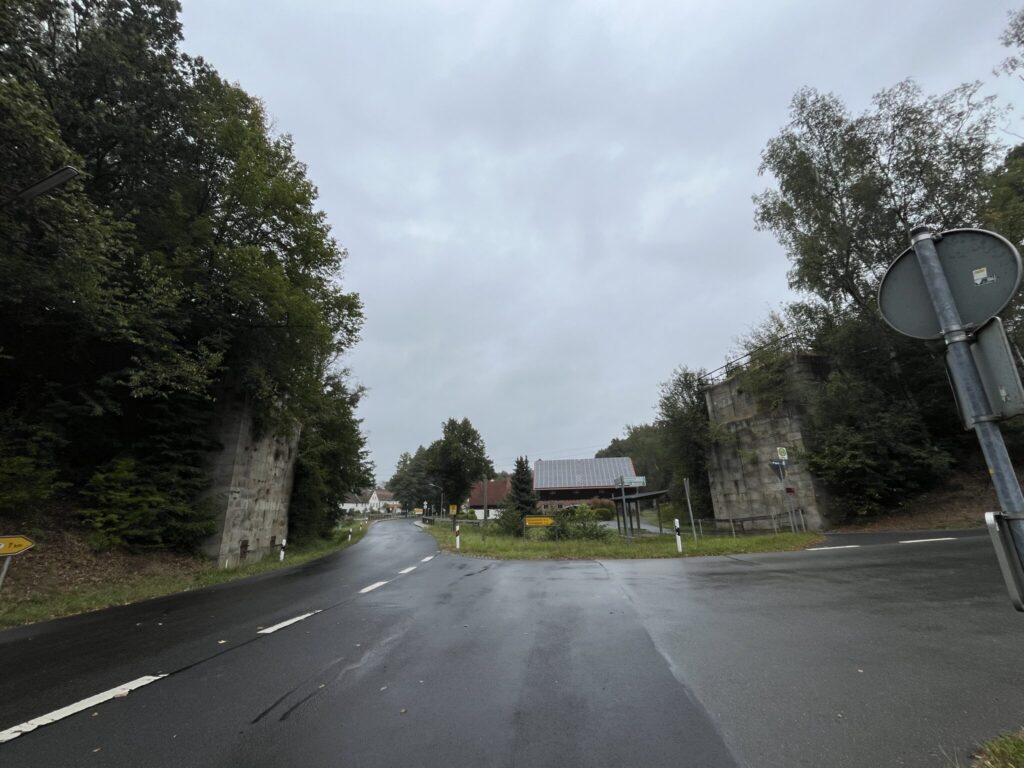
Meanwhile Czech side the whole route has been turned into a cycle way:
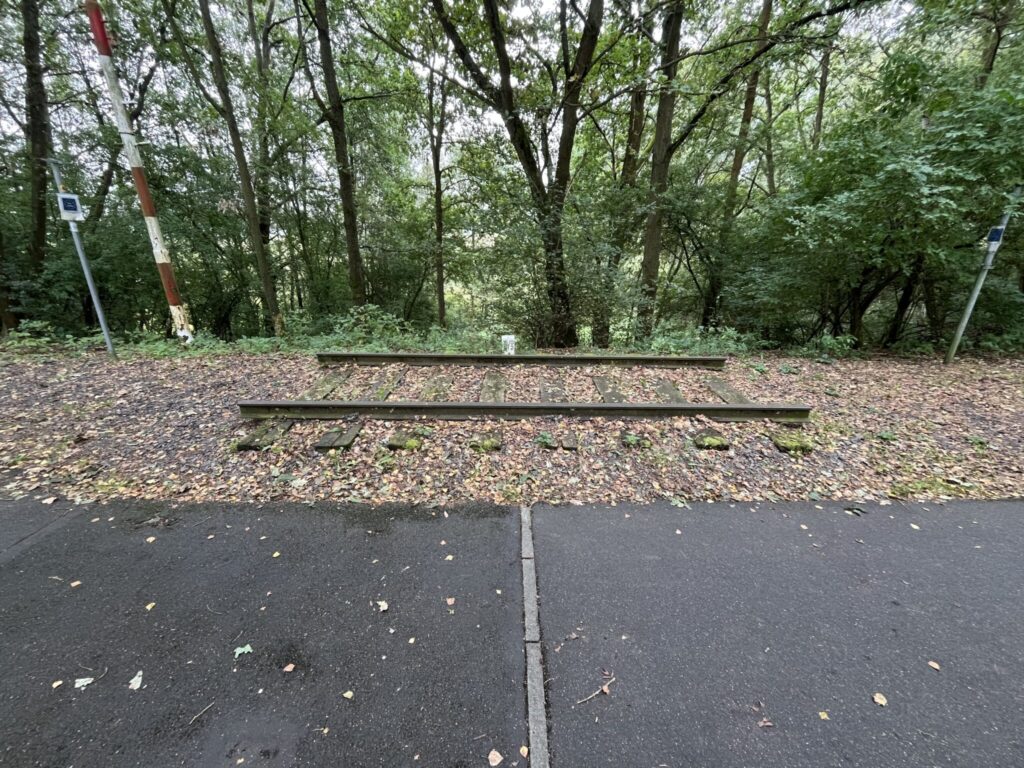
Also the rail line Marktredwitz – Schirnding – Cheb runs more or less parallel to this one. So I do not have this line as a priority in my own research – solving it is hard, and the likely demand low. Overall Germany-Czechia, just like Germany-Poland, does not need a focus on re-activations, but on improvement of existing infrastructure, especially the electrification of lines from Czechia towards Nürnberg and München.
4. Marktschellenberg 🇩🇪 – Grödig 🇦🇹
On my All The Borders map here, 5742-5743 on the VDV map
If lines 1. and 3. were hard, this one is very hard. The “Grüne Elektrische” on the so-called Königsseebahn has not run since 1938, and the line was narrow gauge. You can just about deduce where it used to run, like here at Berchtesgaden station:

Meanwhile I think this is where it used to run in Marktschellenberg:
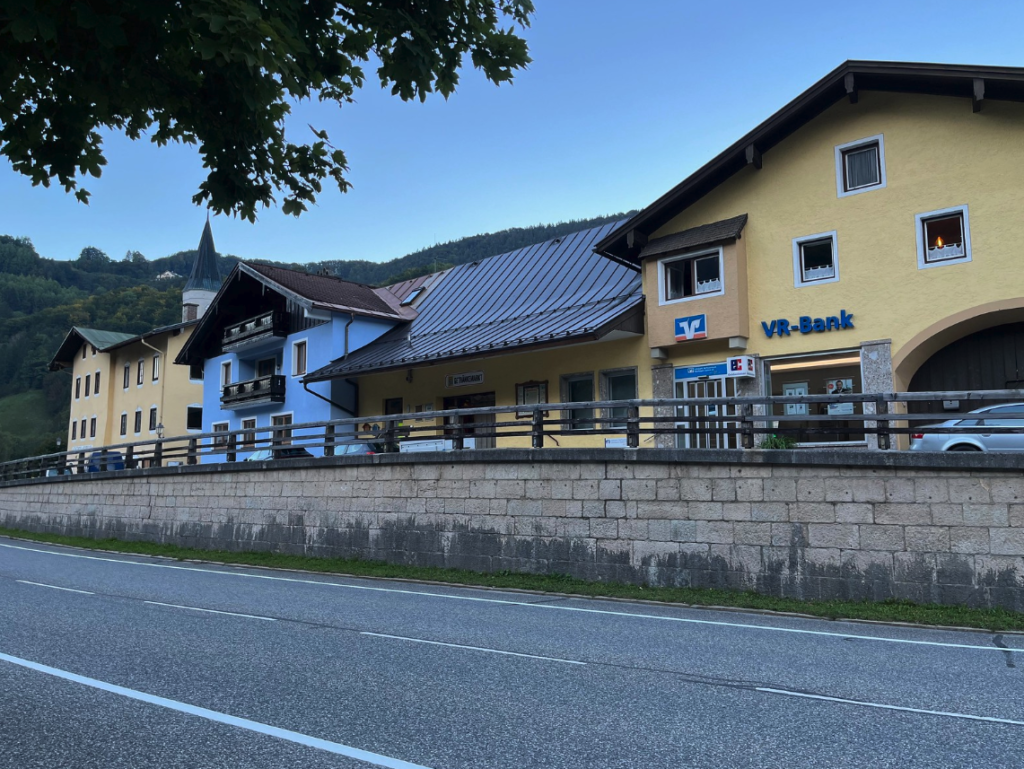
At the Germany-Austria border, missing links are not the problem. It is the quality of the infrastructure that is. Even the main lines at Passau and Salzburg have capacity issues, and rebuilding and electrifying through Simbach-Braunau am Inn should be the overwhelming priority.
5. Rielasingen 🇩🇪 – Ramsen 🇨🇭
On my All The Borders map here, 4320 on the VDV map
There is an active line between Singen and Etzwilen, so strictly speaking this is not a re-activation – the line is active. It crosses a majestic viaduct over the Rhein:

Stadler was even testing hydrogen trains on the line when I was there last year:
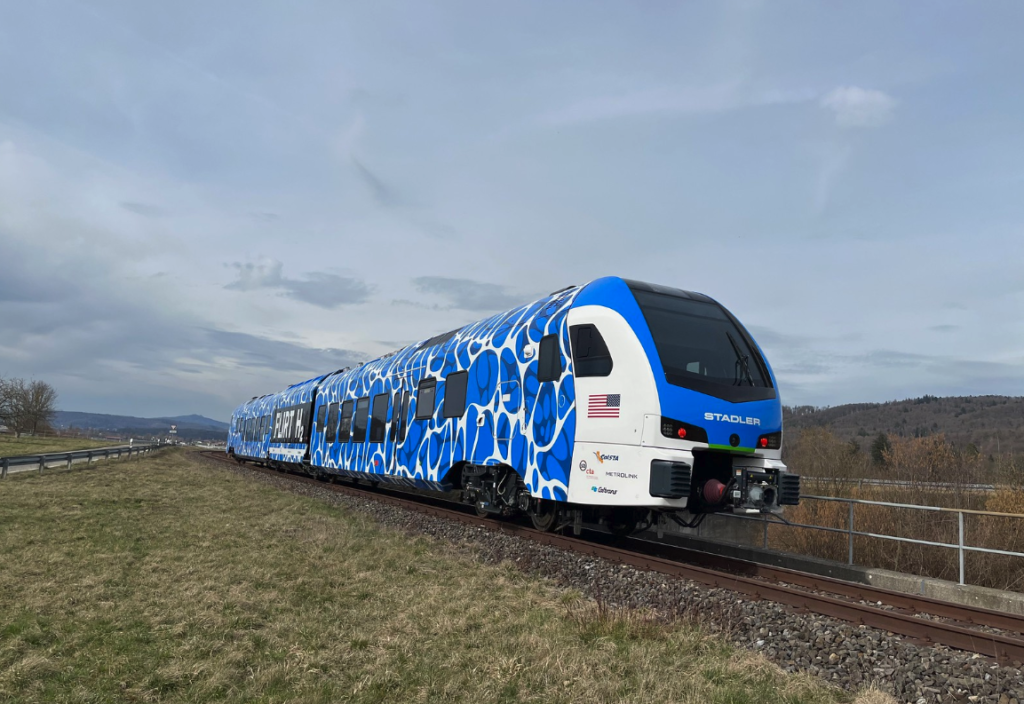
However – unlike any lines with passenger service in Switzerland – this one is not electrified, so to do anything here you would need to electrify c. 15km, meaning it is technically easy. However the problem is on the Swiss side. The line turns west at Etzwilen, not east towards Stein am Rhein, the most significant settlement in the area, so to make it work better you would need a new connecting curve at Etzingen. Capacity at the small Stein am Rhein station could also be an issue. In my view for Germany-Switzerland services, the higher priority needs to be between the western end of the Bodensee and Basel, where electrification on the German side from Waldshut to Basel Bad is planned. Singen – Etzwilen is a much lower priority.
6. Palmrain 🇩🇪 – Huningue 🇫🇷
On my All The Borders map here, 4423 on the VDV map
I had to check they were serious that this one was included. This rail route has been closed since 1937, and since the end of the 1970s a road bridge has stood where the rail bridge once was. The railways on either side of the Rhein here are to serve industry and small harbours on the river:

Huningue station – now a pharmacy:

I suppose – theoretically – the line could work as a freight line to allow Switzerland-France freight to avoid transiting Basel SBB, but trying to do that here – with the need to build a new Rhein bridge next to an existing road bridge in a densely populated area – that looks very hard to me, and I am not at all convinced it makes sense.

7. Breisach 🇩🇪 – Volgelsheim 🇫🇷
On my All The Borders map here, 4310 on the VDV map
Ah, the famous one. Subject of studies and political speeches stretching back more than a decade. The bridge between Breisach and Volgelsheim was destroyed in World War II and a road bridge was built in its place. I was most recently at a protest in April 2024 for the re-opening of this one – you can see the people gathered at the event in this drone picture, and the road bridge is to the top right of the image:
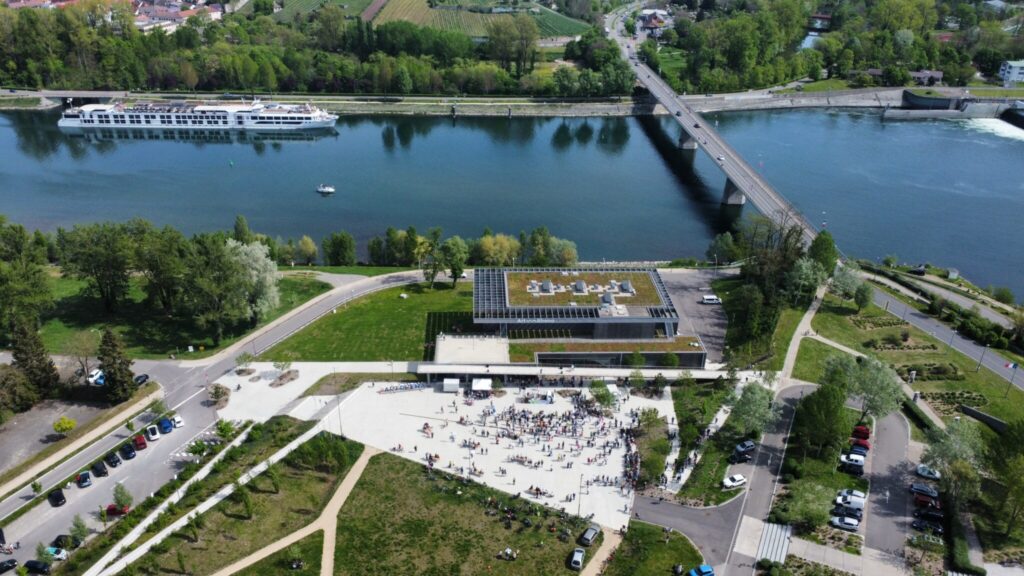
However finding a way to route a railway through here once more is hard and expensive – because putting a train line back on the road bridge is out of the question. There is also the further complication that while electrified lines stretch pretty much all the way to the bridge on the German side, on the French side they do not – there is just a single track diesel line, and not in the best condition, from Volgelsheim to Colmar:

All of that – together with the fact that Freiburg and Baden-Württemberg are much keener on re-opening this line than Grand Est is – mean that while I am sure this line would work, and were it in one country it would have been repaired, I remain rather sceptical as to whether this one is going to be re-activated any time soon.
8. Wintersdorf 🇩🇪 – Roppenheim 🇫🇷
On my All The Borders map here, 4242 on the VDV map
The bridges. It is always the bridges!
Unlike Briesach, at least here there is a bridge – which used to have trains and the road running on it:

The problem is those days are long gone, and the half of the bridge on the French side needs major renovation works. Plus would mixing road and rail traffic as was the case before be allowed? Perhaps running a tram-train with low axel weight could be an option here. Plus when you get to France the line through Roeschwoog towards Strasbourg (also used for traffic from Wörth am Rhein via Lauterbourg) is in a poor state:
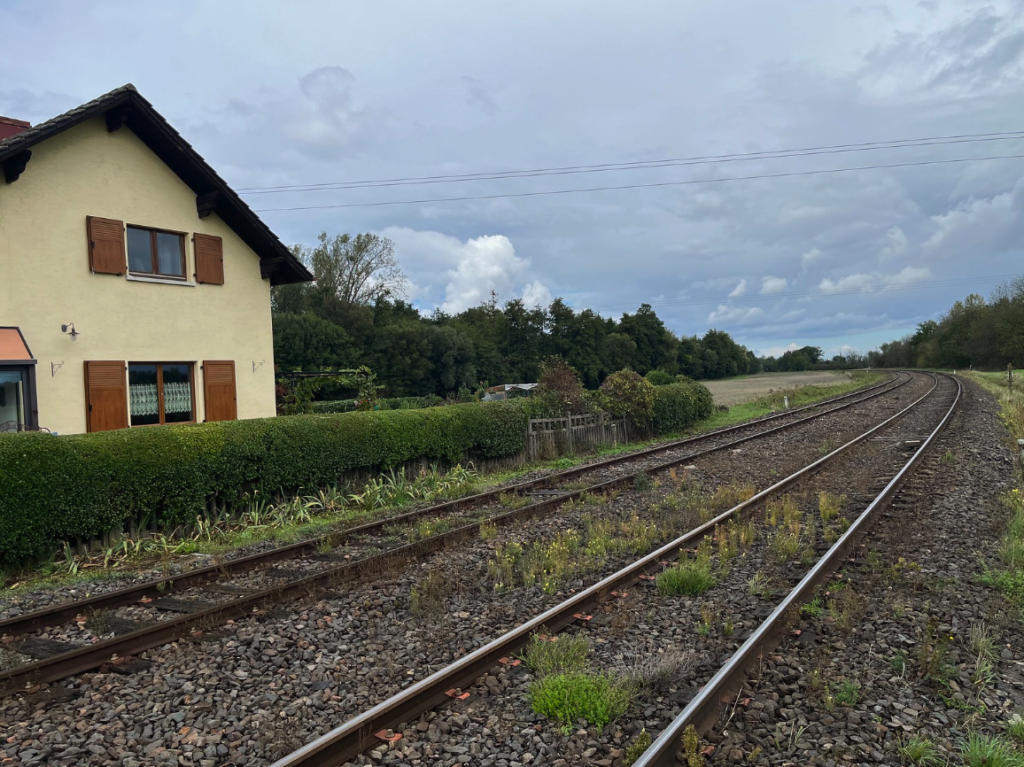
Alternatively re-activating the line towards Haguenau could be an option. German side there is a single track diesel line to just before the eastern end of the bridge. Overall though, this one is hard (albeit slightly less hard than Breisach, but with a slightly weaker case for it), and here too a lot of engagement would be needed from France.
9. Überherrn 🇩🇪 – Hargarten-Falck 🇫🇷
On my All The Borders map here, 3290 on the VDV map
Another one where I was shaking my head about its inclusion. This one I had judged so hopeless I have not even been there! There are two parallel routes to this one – from Saarbrücken to Béning (to the south, double track electrified) and Dillingen to Bouzonville (to the north, single track not electrified) that offer plenty of capacity. And as if that were not enough, there is no passenger traffic on the French side on the line between Béning and Thionville anyway. So hell knows why this is even included. Also given Rielasingen – Ramsen is included (see above) in this VDV report (a legally active line without traffic), I do not understand why they have chosen to include Überherrn – Hargarten-Falck and not (Dillingen -) Niedaltdorf – Bouzonville. So I judge this one hopeless, because there are parallel lines.
10. Walheim 🇩🇪 – Raeren 🇧🇪
On my All The Borders map here, 2572 on the VDV map
This one is often overlooked, as it gets confused with the Vennbahn – a long closed railway to the south of it known for its enclaves and exclaves. The line Stolberg – Walheim – Raeren – Eupen would however work as a secondary line at the Germany – Belgium border south of Aachen. The plans to re-activate the line beyond Stolberg to Breinig were delayed due to 2021 floods in the area, but will happen, and there is a legally active track as far as Raeren. The problem is the Falkenbach Viadukt between Breinig and Walheim that is in a poor state, although still passable at low speed:

The problem is on the Belgian side. Trying to get money for international rail at any of Belgium’s borders is a complicated task, so I am not holding my breath that finance can be found to renovate the line between Eupen and Raeren, and renovate Raeren station:
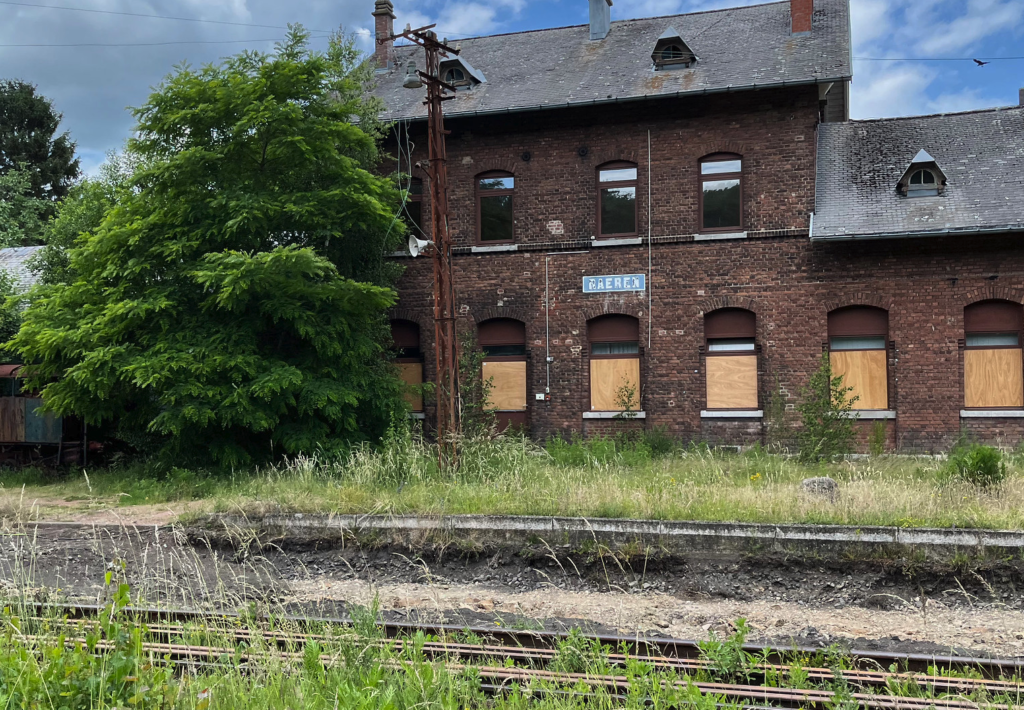
Overall though this one is medium complexity – the difficult renovation task (fixing the viaduct) is on the same side of the border as the greater political will to fix the problem.
11. Moresnet 🇧🇪 – Preuswald 🇩🇪
On my All The Borders map here, 2554 on the VDV map
Another inclusion that leaves me perplexed.
There are effectively two cross border lines from Aachen into Germany – Aachen Hbf to Welkenraedt (used by passenger trains) and Aachen West to Montzen (used by freight trains). This line acted as a connection between those two lines, which is nowadays provided by the line between Aachen Hbf and Aachen West on the German side, and between Welkenraedt and Montzen on the Belgian side. Yes, the Moresnet – Preuswald connection used to be a bit shorter than going via Welkenraedt, but this one is pointless as far as I can tell, not least as there is no passenger traffic through Montzen anyway. Were there ever demand for an Aachen – Tongeren – Hasselt train, this could easily be run via Welkenraedt – there would be no need to re-activate this one.
12. Aachen-Vetschau 🇩🇪 – Bocholtz 🇳🇱
On my All The Borders map here, 2545 on the VDV map
This one is a more interesting inclusion. The route from Aachen to Maastricht taken by the “Three Country Train” via Heerlen is quite long, so re-activating the line between Vetschau and Bocholtz would make sense to shorten the route. Track is even in place, and is operable, on a good part of the route as it is used by a heritage railway:
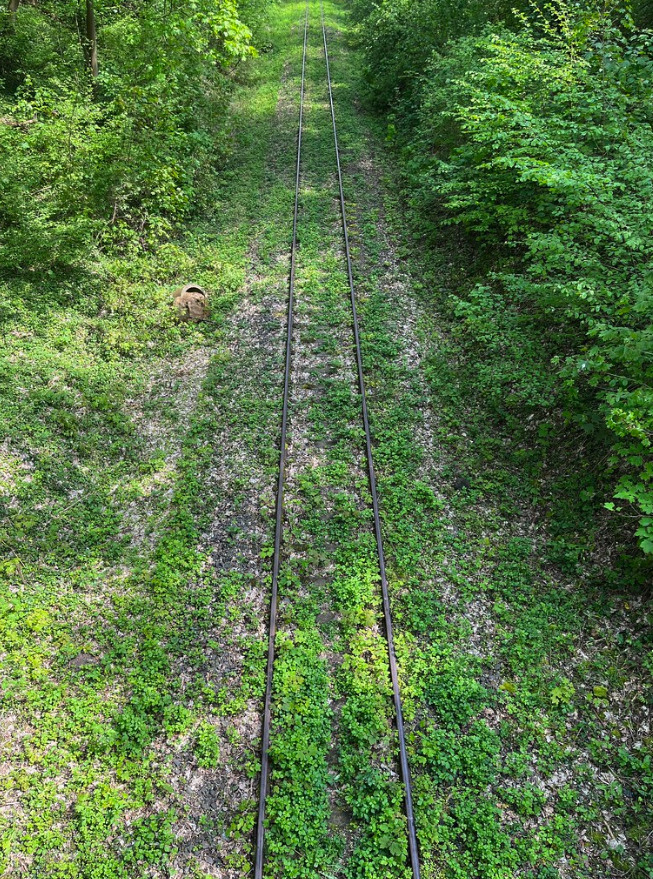
Only the part between Vetschau and the main line completely in disrepair – it is through the line of trees in this drone picture:

This one is also medium difficulty to solve, although as Aachen – Heerlen – Maastricht does run already, I think the route via Raeren should be a higher priority for Nordrhein-Westfalen than this one.
13. Dalheim 🇩🇪 – Vlodrop 🇳🇱
On my All The Borders map here, 2524 on the VDV map
Including this (and to some extent line 14. below as well) puts the whole report in a bad light.
Yes, this is the former “Eiserner Rhein”. Yes, this had historical significance. Yes, the line exists almost to the border on the German side:
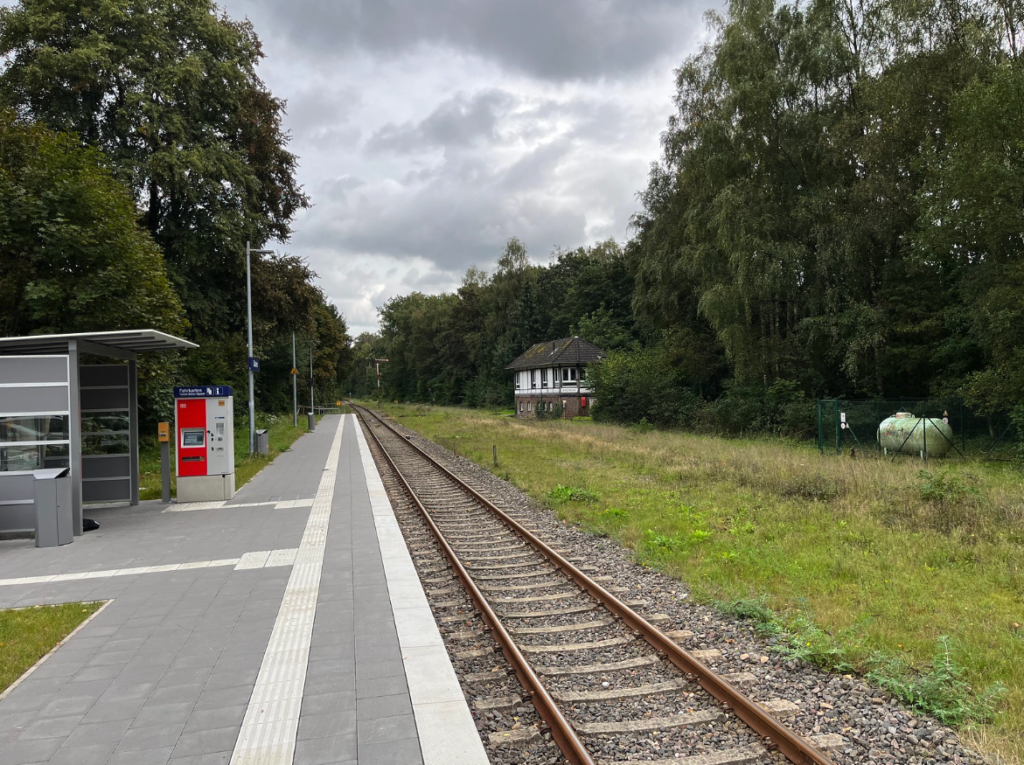
BUT the line has largely been torn up on the Dutch side, and between the border and Roermond runs through a nature reserve:
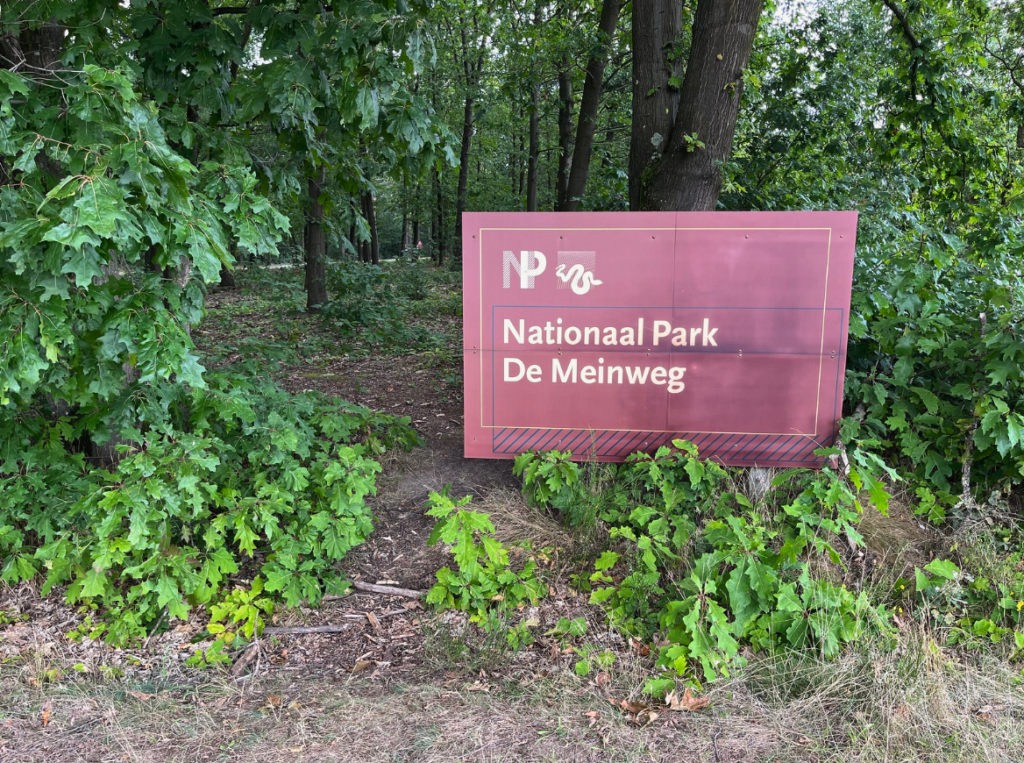
If some other country was advocating Germany runs a re-activated line through a nature reserve, German politicians would be going “hell no”. So why does VDV think it is a good idea to include a line that would require the Dutch to build through a nature reserve? This one is impossible.
14. Kranenburg 🇩🇪 – Groesbeek 🇳🇱
On my All The Borders map here, 2610 on the VDV map
Before I went to look at this one during my 2022 #CrossBorderRail project I was optimistic about it. Then I went to the last village in Netherlands, Groesbeek, and it changed my mind. This is where the line runs in the village – what today is the village square:
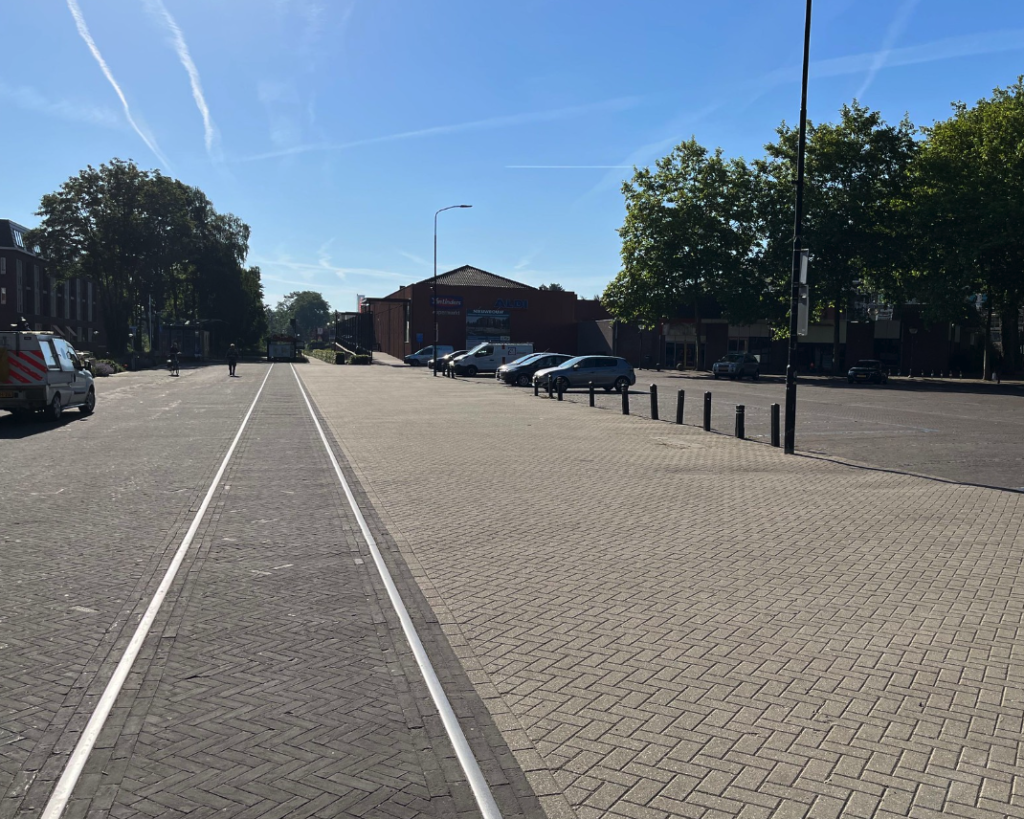
Running regular trains through here is out of the question. At a pus perhaps a tram could work?
While the situation is somewhat better German side, the line is still only single track and not electrified, and unreliable due to the lack of passing loops:
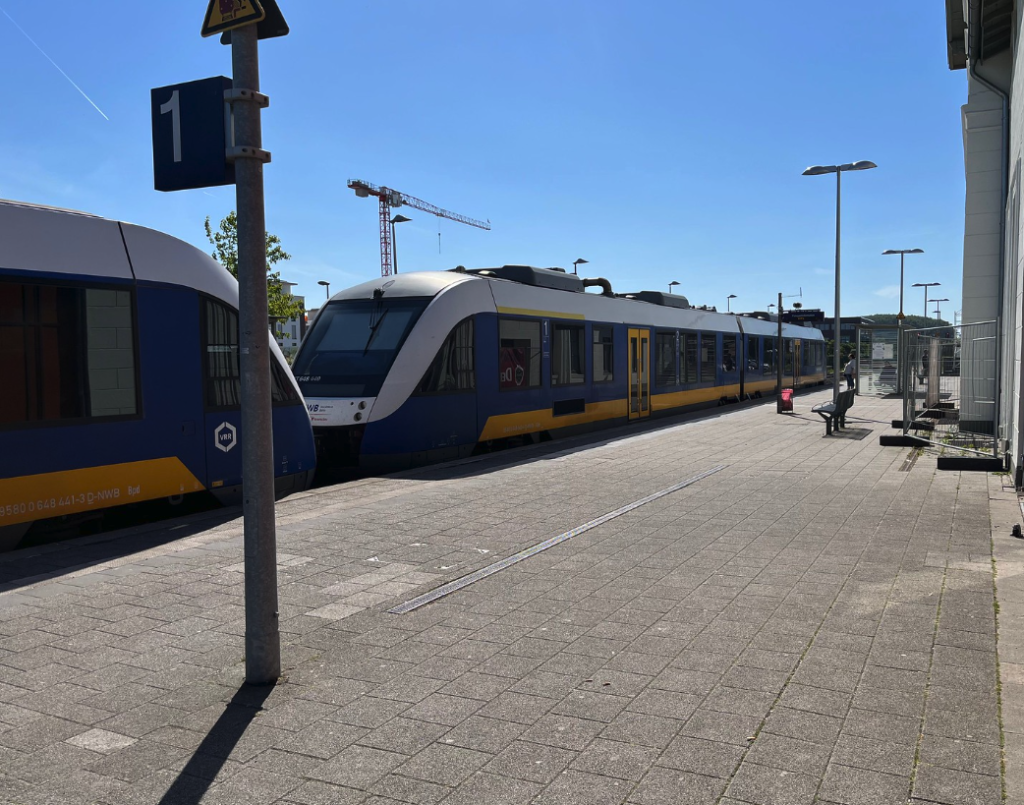
So fixing this one is very hard – Germany wants to re-open it more than Netherlands does, but the Groesbeek problem is on the Dutch side. Routing around or under the village would be very tough.
15. Laarwald 🇩🇪 – Coevorden-Heege 🇳🇱
On my All The Borders map here, 9203 on the VDV map
This one has not been completed yet, but plans and finances to re-activate this one are in place. It is easy and comparatively cheap to do as track exists for freight trains already:

The only problem is the bridge the freight trains use turns south, away from Coevorden station, so this small rotating bridge will need to be renovated:

But this one will happen – it is a comparatively simple and cheap project.
Conclusions
So there we have it. Of the 15 projects outlined in the VDV report, this is the summary.
1 project (Seifhennersdorf 🇩🇪 – Varnsdorf pivovar Kocour 🇨🇿) has been fixed already, and 1 further one (Laarwald 🇩🇪 – Coevorden-Heege 🇳🇱) is in the process of being fixed. 1 project would be easy (Rielasingen 🇩🇪 – Ramsen 🇨🇭), 2 have medium difficulty (Walheim 🇩🇪 – Raeren 🇧🇪, Aachen-Vetschau 🇩🇪 – Bocholtz 🇳🇱) and 2 are hard (Guben 🇩🇪 – Gubinek 🇵🇱, Waldsassen 🇩🇪 – Slapany 🇨🇿). Beyond that I rank 4 very hard (Marktschellenberg 🇩🇪 – Grödig 🇦🇹, Breisach 🇩🇪 – Volgelsheim 🇫🇷, Wintersdorf 🇩🇪 – Roppenheim 🇫🇷, Kranenburg 🇩🇪 – Groesbeek 🇳🇱), 1 impossible (Dalheim 🇩🇪 – Vlodrop 🇳🇱), and 3 pointless: (Palmrain 🇩🇪 – Huningue 🇫🇷, Überherrn 🇩🇪 – Hargarten-Falck 🇫🇷, Moresnet 🇧🇪 – Preuswald 🇩🇪).
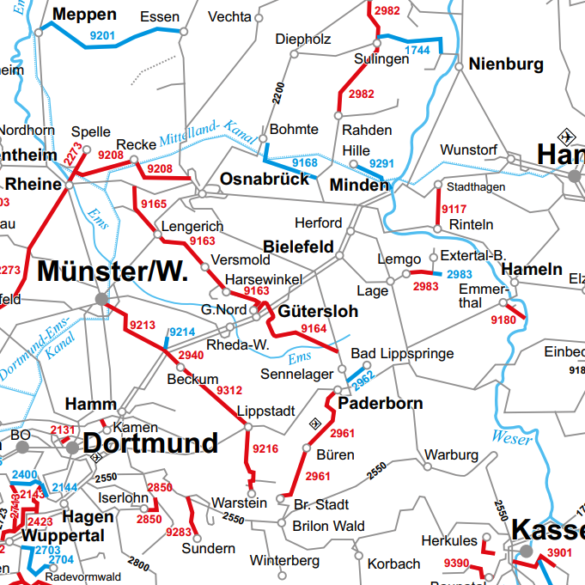
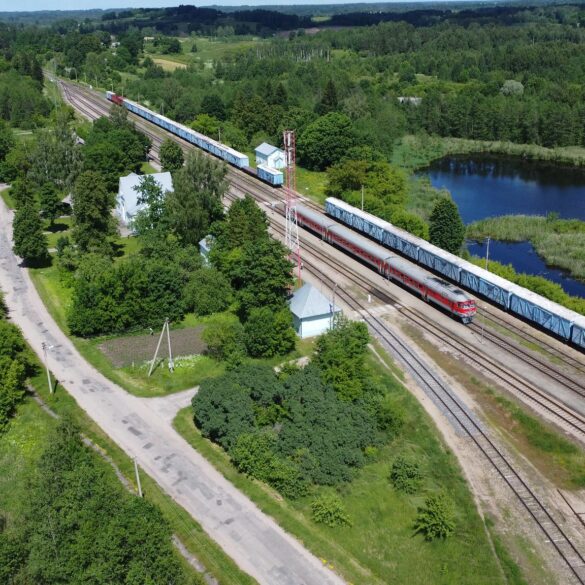
Can only agree! I miss a line (actually 2 lines) on your “All the borders map” though…. which I mentioned earlier. They’re outside Germany, anyway.